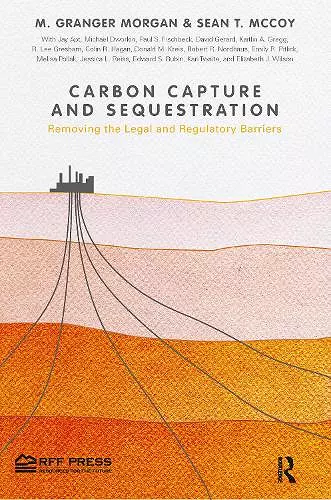Carbon Capture and Sequestration
Removing the Legal and Regulatory Barriers
M Granger Morgan author Sean T McCoy author
Format:Hardback
Publisher:Taylor & Francis Inc
Published:21st Jun '12
Currently unavailable, and unfortunately no date known when it will be back

The United States produces over seventy percent of all its electricity from fossil fuels and nearly fifty percent from coal alone. Worldwide, forty-one percent of all electricity is generated from coal, making it the single most important fuel source for electricity generation, followed by natural gas. This means that an essential part of any portfolio for emissions reduction will be technology to capture carbon dioxide and permanently sequester it in suitable geologic formations. While many nations have incentivized development of CCS technology, large regulatory and legal barriers exist that have yet to be addressed. This book identifies current law and regulation that applies to geologic sequestration in the U.S., the regulatory needs to ensure that geologic sequestration is carried out safely and effectively, and barriers that current law and regulation present to timely deployment of CCS. The authors find the three most significant barriers to be: an ill-defined process to access pore space in deep saline formations; a piecemeal, procedural, and static permitting system; and the lack of a clear, responsible plan to address long-term liability associated with sequestered CO2. The book provides legislative options to remove these barriers and address the regulatory needs, and makes recommendations on the best options to encourage safe, effective deployment of CCS. The authors operationalize their recommendations in legislative language, which is of particular use to policymakers faced with the challenge of addressing climate change and energy.
"Granger Morgan and his colleagues work on policy issues where the technical details matter, and regulating carbon capture and storage is such an issue in spades. This volume carefully explains why old models won’t work, and more important, how to do it right. It’s an essential starting point for realizing the promise of this technology."
—Robert W. Fri, Senior Fellow Emeritus at Resources for the Future
"An important and up-to-date study of legal issues surrounding carbon capture and storage in the United States. The authors provide valuable advice on how regulation in this field should develop in the future, and the book should be essential reading by policy makers and lawyers dealing with the challenges of energy and climate change issues."
—Professor Richard Macrory, Director of the Carbon Capture and Storage Legal Programme, University College, London
"It is hard to see how the world will make the deep cuts in emissions needed to slow global warming without technologies to capture carbon pollution from power plants and sequester it safely underground. Yet real investment in these technologies has lagged—in part because the right regulatory frameworks aren't in place. There's no better overview of the pivotal regulatory issues and their solutions in the United States than this terrific book by Morgan et al. Making carbon capture and sequestration a practical reality in time to protect the planet requires a coherent regulatory strategy, and at long last we have a book that offers one."
—David Victor, Director of the Laboratory on International Law and Regulation, UC San Diego
ISBN: 9781617261015
Dimensions: unknown
Weight: 657g
304 pages